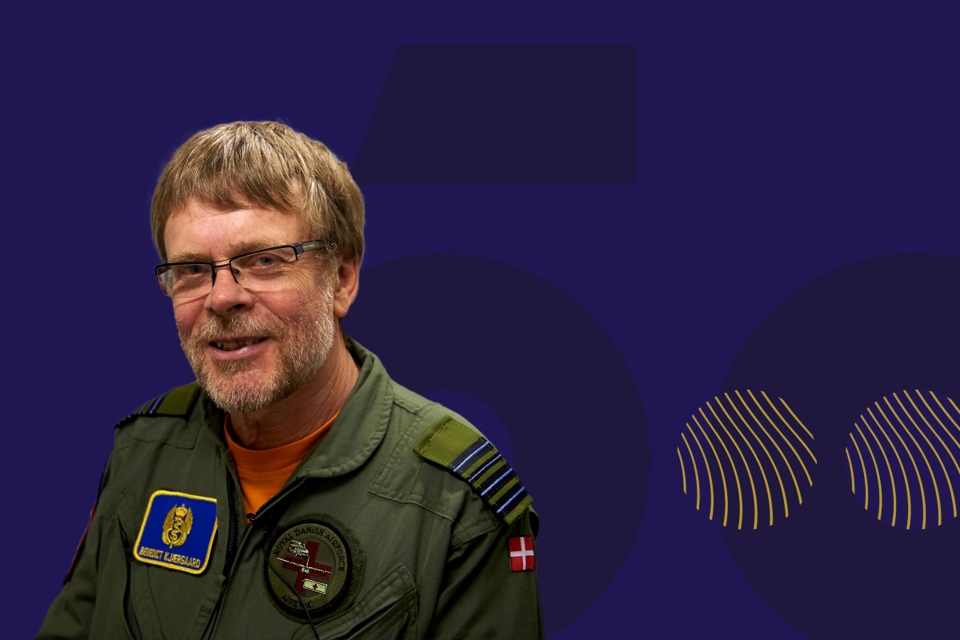By Lea Laursen Pasgaard, AAU Communication and Public Affairs
Photo: Air Force Photo Service. Graphic: Søren Emil Søe Degn
In many ways, it was a coincidence that Benedict Kjærgaard ended up at Aalborg University. In the 90s, he got a job at Aalborg Hospital and worked with the University Hospital in Aarhus until Aalborg University got its own medical programme in 2010. Since then, he has taught classes in all year groups of the popular programme in Aalborg, which according to Benedict Kjærgaard has made a big difference to the shortage of doctors in Northern Denmark.
"I am very pleased that we have created a quality medical programme that the students are happy with. We have tried to make it more problem-based than classic medical programmes, and there is probably also more group work. That can be a good thing, but it can also be a bad thing if there are some students who sit back and 'hide'," says Benedict Kjærgaard.
"I was apprehensive about it at the time. I feared it wouldn't go all that well. Of course, there are a few students who drop out every now and then, but overall I think we’ve hit a good level," he adds.
Benedict Kjærgaard is a clinical professor at Aalborg University, and he is one of the prominent AAU figures interviewed by AAU Update about their relationship with the university in connection with the 50th anniversary last year.
Research on lab animals saves human lives
Benedict Kjærgaard has – by his own estimation – a somewhat more mixed position than most clinical professors. Formally, he is employed 20 percent of his time as a consultant in the Department of Cardiovascular Surgery at Aalborg University Hospital. He spends the other 80 percent teaching medical students, among other things, in the elective course "Læge i forsvaret [Military Doctor]" and, not least, on research using laboratory animals.
He is the head of the Biomedical Research Laboratory which is a partnership of AAU and Aalborg University Hospital. Thus, he is the one who decides who has access to the laboratory's pigs, rabbits, rats and mice for research experiments. And the one who is responsible for ensuring that AAU's clinical trials comply with current rules.
As a cardiopulmonary surgeon, Benedict Kjærgaard has worked with animal experiments for many years. Among other things, in the development of a mobile heart-lung machine that he got the idea for in the 1990s. It has revived numerous severely hypothermic people with cardiac arrest – including a group of boarding school students who capsized in a dragon boat in Præstø Fjord in 2011.
"The person I treated at the time, the other doctors had pronounced dead. He has become an engineer and, as far as I can understand from his mother, is doing well to this day. She still sends me Christmas cards," says Benedict Kjærgaard.
The idea for the mobile heart-lung machine arose while he was serving on Air Force rescue helicopters for more than 30 years. Along with the Air Force, he and Aalborg University Hospital established an emergency team in 2004 that can fly out with the heart-lung machine and help in emergency situations.
